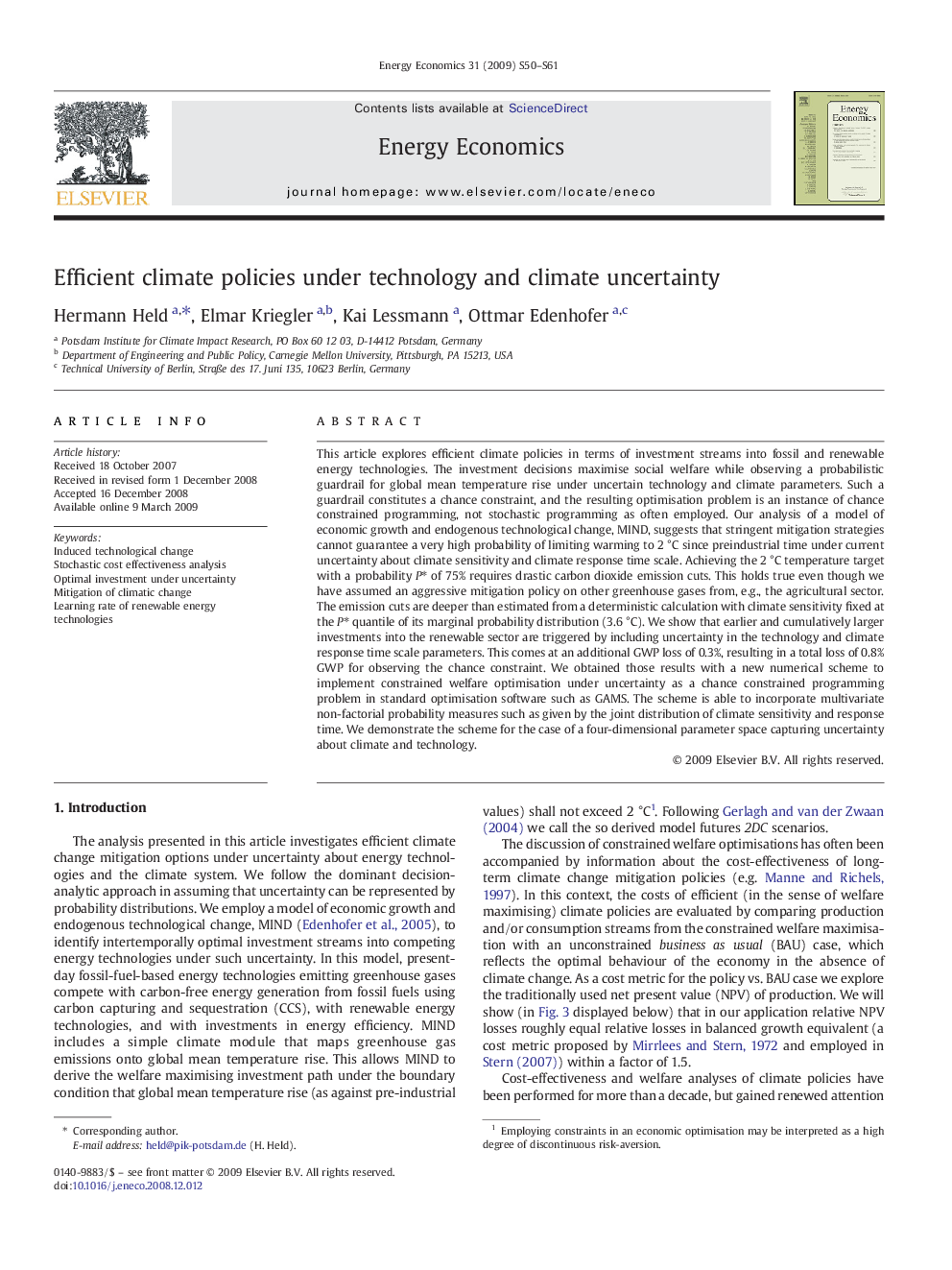| کد مقاله | کد نشریه | سال انتشار | مقاله انگلیسی | نسخه تمام متن |
|---|---|---|---|---|
| 5065895 | 1372334 | 2009 | 12 صفحه PDF | دانلود رایگان |
عنوان انگلیسی مقاله ISI
Efficient climate policies under technology and climate uncertainty
دانلود مقاله + سفارش ترجمه
دانلود مقاله ISI انگلیسی
رایگان برای ایرانیان
موضوعات مرتبط
مهندسی و علوم پایه
مهندسی انرژی
انرژی (عمومی)
پیش نمایش صفحه اول مقاله

چکیده انگلیسی
This article explores efficient climate policies in terms of investment streams into fossil and renewable energy technologies. The investment decisions maximise social welfare while observing a probabilistic guardrail for global mean temperature rise under uncertain technology and climate parameters. Such a guardrail constitutes a chance constraint, and the resulting optimisation problem is an instance of chance constrained programming, not stochastic programming as often employed. Our analysis of a model of economic growth and endogenous technological change, MIND, suggests that stringent mitigation strategies cannot guarantee a very high probability of limiting warming to 2 °C since preindustrial time under current uncertainty about climate sensitivity and climate response time scale. Achieving the 2 °C temperature target with a probability Pâ of 75% requires drastic carbon dioxide emission cuts. This holds true even though we have assumed an aggressive mitigation policy on other greenhouse gases from, e.g., the agricultural sector. The emission cuts are deeper than estimated from a deterministic calculation with climate sensitivity fixed at the Pâ quantile of its marginal probability distribution (3.6 °C). We show that earlier and cumulatively larger investments into the renewable sector are triggered by including uncertainty in the technology and climate response time scale parameters. This comes at an additional GWP loss of 0.3%, resulting in a total loss of 0.8% GWP for observing the chance constraint. We obtained those results with a new numerical scheme to implement constrained welfare optimisation under uncertainty as a chance constrained programming problem in standard optimisation software such as GAMS. The scheme is able to incorporate multivariate non-factorial probability measures such as given by the joint distribution of climate sensitivity and response time. We demonstrate the scheme for the case of a four-dimensional parameter space capturing uncertainty about climate and technology.
ناشر
Database: Elsevier - ScienceDirect (ساینس دایرکت)
Journal: Energy Economics - Volume 31, Supplement 1, 2009, Pages S50-S61
Journal: Energy Economics - Volume 31, Supplement 1, 2009, Pages S50-S61
نویسندگان
Hermann Held, Elmar Kriegler, Kai Lessmann, Ottmar Edenhofer,